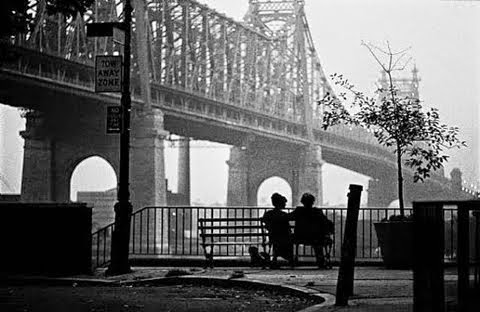Fiend without a Face looks to be somewhat decent if basic 50's nuclear-age militaristic-leaning science fiction (gotta make sure that radar can cover those Russians!) However, the horror of it though, the kill set pieces, are fairly intense for the time (it even spurred on controversy in Parliament in the UK of all places) and consistently effective.
Where it gets to be even more engrossing is once the aged professor finally reveals what he's been up to in his secret lab, and it's a fantastic explanation of a process that feels closer to an EC Comic. And once you finally get to that brain, if it is still cheesy it's forgiven for how well the filmmakers use sound design, stop motion animation (especially the animation, man it's so gloriously violent) and creative compositions to amplify the creepiness. Indeed the last 25 minutes or so is pretty badass overall.
In short, God bless Criterion.
For as much as I sometimes (mistakenly but not without some reason) look at Truffaut and, how do I put this, I don't not take him seriously as a major artist but his works often feel rather light when compared to some of his contemporaries, I can forget how potent he could depict real ache and heartbreak and longing that people get for others (or in another less complex word, attachment).
Two English Girls is the second adaptation Truffaut made from the author of Jules and Jim, and if it isn't quite so exceptional as that (Jeanne Moreau and the effervescent and energetic, wonderfully inspired cinematography elevated that to maybe his greatest work), this is nonetheless a fully rewarding emotional experience that means to to and succeeds in taking us on a long-winding journey. It takes its time to set up Claude and these two women, Muriel and Anne, not to mention the (not uncommon for Truffaut) very, um, 'literate' narration style (it also connects it to Jules and Jim, but is even more literal at points to what we're being shown).
 |
| Jean Pierre Leaud first tried the move that Kramer would later do with George's mother on Seinfeld |
But once Truffaut finds the right groove and especially by the middle - once Claude and Muriel are separated (the "Give it a Year" thing that used to happen when I assume the young were a little too quick to elope) and Anne comes into the picture - it has the effect of working like a sad but very potent love song; Truffaut's "Love Hurts" could be another way to phrase it. And once Anne really comes in to the picture, it becomes even more complicated. Even the narration adds to this feeling (ie when after Claude first makes a move on Anne in her studio, the voice mentions how Claude will go to get an island for them, and it's like... Okay then!)
Also, while I may prefer the cinematography overall in J&J, I have to also note that there is much to admire in how this is shot - Nestor Almendros hits the spot again - especially when the camera has this sweep across locales, or certain moments feel like a painting in composition (fitting for art being what some of these characters are into). Lastly, Delerue's score fills one with sorrow almost from the start. I don't know where I would tank this in his oeuvre, yet it is one of this filmmaker's most significant as far as execution and pathos. It's actually kind of devastating in a different way than J&J - it's made by a director who is a little more mature, if edging toward austere.
(PS: I in part finally pulled this off the shelf after watching a Q&A with Greta Gerwig and how she took the Talking-of-the-Diary parts for Little Women from this film.)









